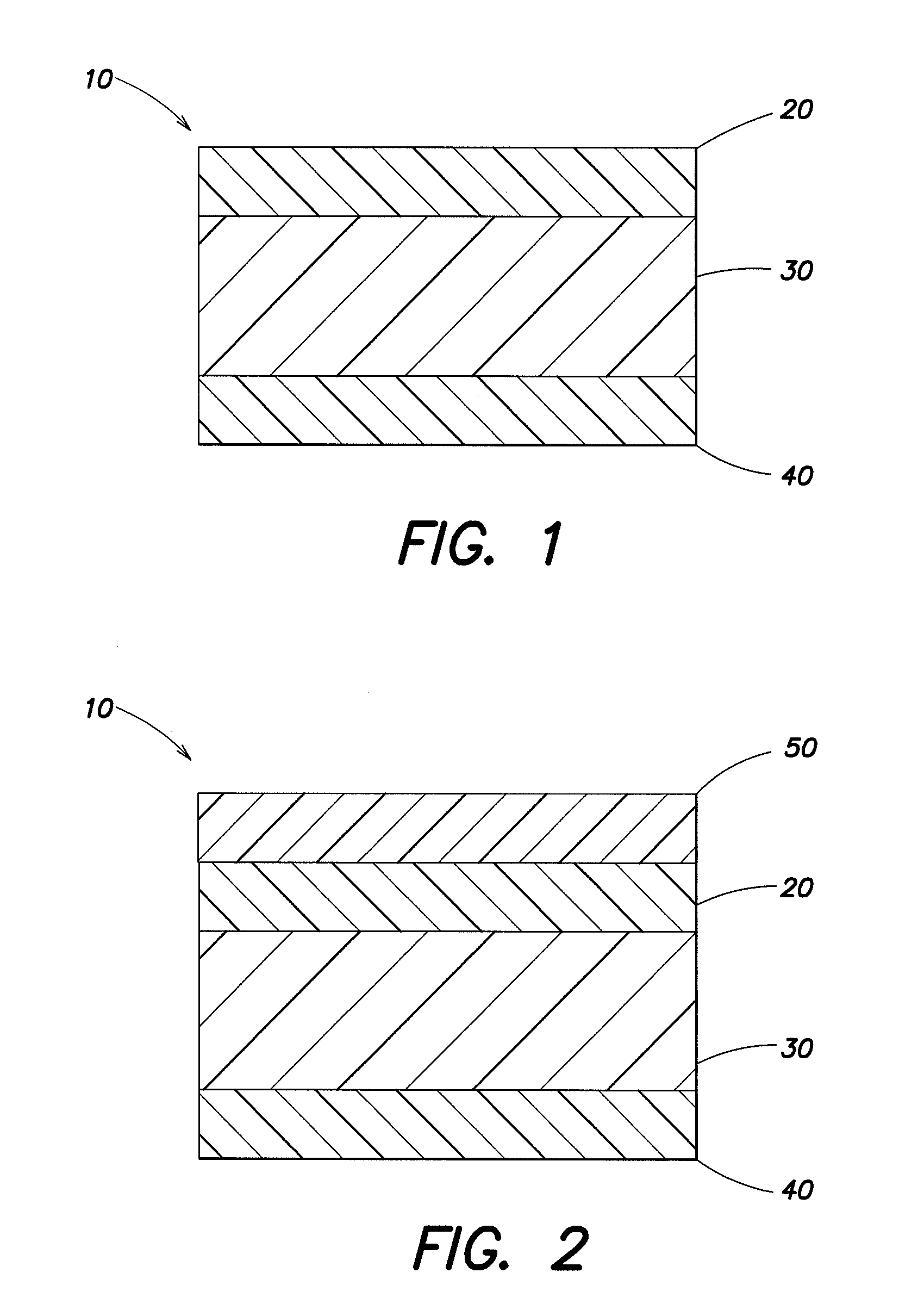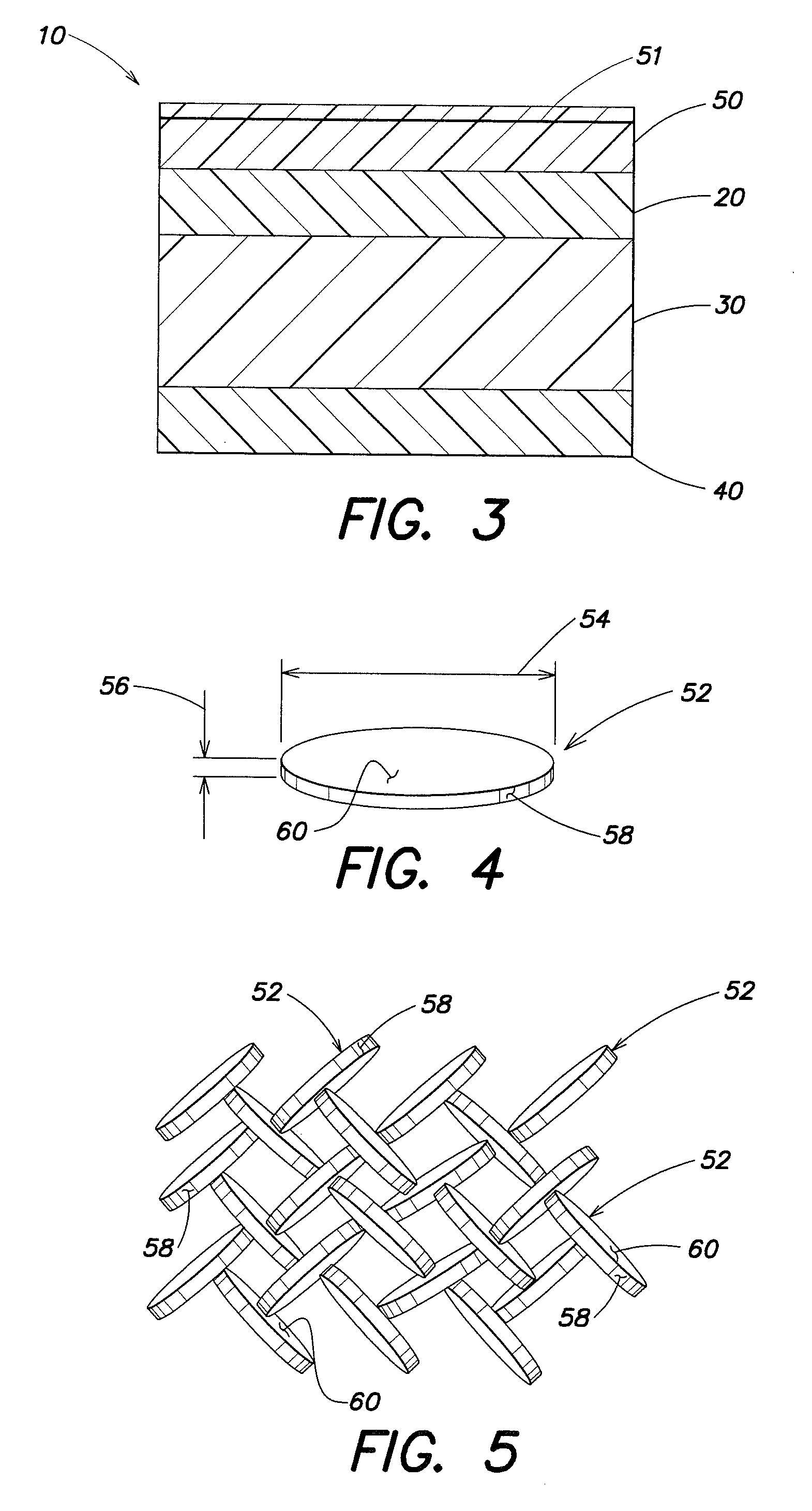Laminated panel
a technology of laminates and laminates, applied in the field of laminates, can solve the problems of increasing the cost of laminates, poor performance, and high cost of chemical-resistant laminates, and reducing the protection of solvents, and reducing the protection of solvents
- Summary
- Abstract
- Description
- Claims
- Application Information
AI Technical Summary
Benefits of technology
Problems solved by technology
Method used
Image
Examples
example 1
[0034]A high-pressure version of the present laminate 10 is manufactured using a non-continuous press. A build-up comprising a core layer 30 and a decorative layer 20 is made in a superimposed relationship. The core layer 30 comprises at least one sheet of kraft paper impregnated with a phenolic resin such as phenol-formaldehyde resin.
[0035]The decorative layer 20 includes a paper sheet partially impregnated with a thermoset resin formulation. The partial impregnation is carried out so that about 40% to 60% of the total amount of resin formulation necessary for full saturation is used. The resin formulation includes a melamine-formaldehyde resin and synthetic silicate particles (e.g., Laponite® R brand synthetic layered silicate) in a concentration within the range of about 0.005% to about 1.0% of the final weight of the resin formulation, and catalysts and release agents as required. The decorative sheet 20 is preferably dried to a volatile content of about 5.0% to about 15.0% for ...
example 2
[0037]A high-pressure version of the present laminate 10 is manufactured in a manner similar to that described within Example 1 above. In this example, an overcoat layer 50 of the resin formulation is subsequently applied to the surface of the dried decorative layer 20, which surface is disposed away from the core layer 30. The build-up is placed between the steel caul plates of the non-continuous press and is subjected to the processing steps disclosed in Example 1.
example 3
[0038]A high-pressure version of the present laminate 10 is manufactured in a manner similar to that described within Example 2 above. In this example, the overcoat layer 50 of resin is either applied to the decorative sheet 20 in combination with an overlay sheet 51, or is replaced by a overcoat layer 50 comprising an overlay sheet 51 at least partially impregnated with the resin formulation. The build-up is placed between the steel caul plates of the non-continuous press and is subjected to the processing steps disclosed in Example 1.
PUM
| Property | Measurement | Unit |
|---|---|---|
| mean particle size | aaaaa | aaaaa |
| particle size | aaaaa | aaaaa |
| mean particle size | aaaaa | aaaaa |
Abstract
Description
Claims
Application Information
 Login to View More
Login to View More - R&D
- Intellectual Property
- Life Sciences
- Materials
- Tech Scout
- Unparalleled Data Quality
- Higher Quality Content
- 60% Fewer Hallucinations
Browse by: Latest US Patents, China's latest patents, Technical Efficacy Thesaurus, Application Domain, Technology Topic, Popular Technical Reports.
© 2025 PatSnap. All rights reserved.Legal|Privacy policy|Modern Slavery Act Transparency Statement|Sitemap|About US| Contact US: help@patsnap.com


